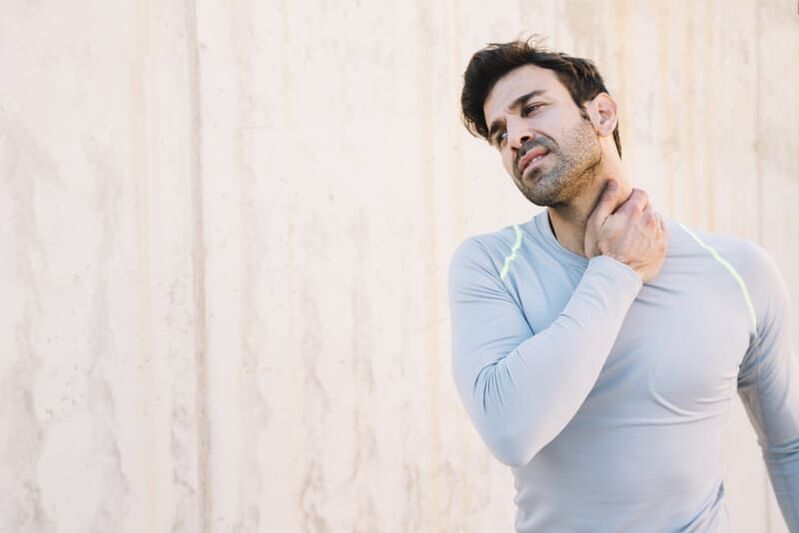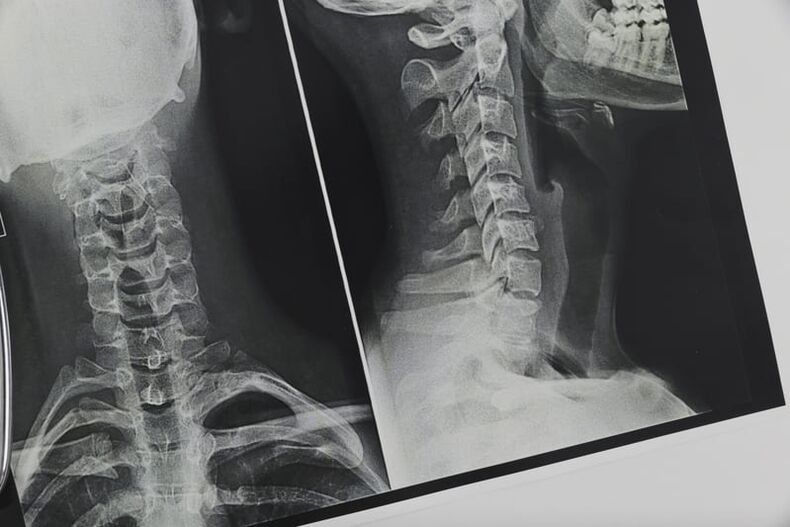
A sedentary lifestyle becomes the key to the development of many diseases associated with musculoskeletal system dysfunction. The most common disease is cervical osteochondrosis, which affects the intervertebral discs. This disease appears suddenly and develops for a long time. Premature treatment leads to a significant decline in health quality.
Typical symptoms of cervical osteochondrosis:
- Headache in the back of the head;
- Dizziness;
- Pain in arms, shoulders, back;
- Cracking in the neck;
- Numbness of the limbs;
- Deterioration of vision;
- The appearance of fatigue, muscle tension at the slightest physical strain;
- light head;
- Movement coordination is interrupted.
Very minor symptoms may develop in irreversible spinal pathology. Therefore, in case of the above signs, it is necessary to look for ways to prevent the development of the disease.

Causes and consequences of cervical osteochondrosis
The onset of the disease occurs due to the influence of the following factors:
- Sedentary lifestyle (sitting, in the office);
- Improper nutrition (lack of calcium, magnesium);
- Inheritance;
- Hypothermia, mechanical damage to the neck;
- Weight lifting;
- Being overweight;
- Drinking alcohol.
If you do not take preventative measures and do not engage in treatment, but only take medications that relieve pain, then complete destruction of the thinned bone can occur. Also, the development of the disease leads to a change in the position of the vertebrae, constriction of blood vessels. As a result, blood begins to circulate worse, the normal functioning of the cardiovascular system is disrupted and brain activity deteriorates. In addition, patients often complain of migraine, decreased visual acuity, hypertension or hypotension. The most dangerous result is the appearance of:
- Intervertebral hernia;
- Spinal cord injury;
- Vestibular trunk syndrome;
- Compression of the vertebral artery.
Only timely treatment will stop the progressive development of the disease.

How to cure cervical osteochondrosis at home
Even after contacting qualified specialists, the patient receives a list of recommendations regarding self-medication. It is possible to achieve positive results only by regularly performing a variety of procedures, which includes anesthesia by applying an ointment, mixture, cream. An important result of preventing cervical osteochondrosis is achieved through self-massage and gymnastic exercises.
To relieve pain, normalize blood circulation and eliminate inflammation, rub the affected area. Recipe for rubbing:
- A mixture of vodka with horseradish, the root of a plant, crushed in a blender and a liquid substance are mixed in equal proportions. The infusion is rubbed overnight for 14 days.
- A combination of olive oil, plantain and sage, herbs in a volume of 2 tablespoons poured with a fatty substance (50 ml) and Vaseline (40 ml). The drug is rubbed into the neck three times a day.
- Boiled potatoes are shaken and mixed with honey, after the mass has cooled slightly, it should be applied to the diseased area and wrapped in a film and a handkerchief.
To restore and enrich the body with vitamins, you need to take tinctures and decoctions. The use of cinquefoil is considered effective. Plant 30 gr. dry, pour hot water (0, 5 liters) and inject for 3 weeks. The drug is taken 3 times a day for 1 tablespoon. l.
Also an equally popular recipe is a decoction of parsley roots, which are crushed and poured with boiling water, for every 100 grams. the roots need 1 liter of water. The composition is boiled for 1, 5 hours, then take 1 tablespoon. l. three times a day. The course lasts 3 weeks.

Osteochondrosis of the cervix can be treated with self-massage
Regular physical impact on the painful area helps stop the disease from progressing. Massage does not require much time, however, requires a careful approach, the study of hotspots. Therefore, before proceeding with the process, it is necessary to identify the areas that can not be affected.
Self-massage procedure:
- Taking a sitting position;
- Complete relaxation of the body;
- The fingers are applied to the neck, and the light stroke is performed from top to bottom for 2 minutes;
- The exercise is repeated, only with the thumbs with great effort;
- The lateral surface of the cervical spine is rubbed in a circular motion;
- Boiling muscles with shifts and contractions;
- Upon completion, stroking.
The session should last 8-10 minutes.
In combination with massage, therapeutic exercises are considered effective. Exercise should be calm and not strain the body. Emphasis should be placed on the cervical spine, head curves, neck extension, shoulder movement.

















































